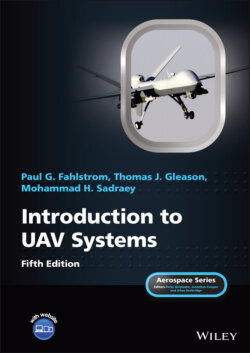Читать книгу Introduction to UAV Systems - Mohammad H. Sadraey - Страница 27
1.3.2 Mission Planning and Control Station
ОглавлениеThe MPCS, also called the GCS, is the operational control center of the UAV system where video, command, and telemetry data from the air vehicle are processed and displayed. These data are usually relayed through a ground terminal, which is the ground portion of the data link. The MPCS shelter incorporates a mission planning facility, control and display consoles, video and telemetry instrumentation, a computer and signal processing group, the ground data terminal, communications equipment, and environmental control and survivability protection equipment.
The MPCS can also serve as the command post for the person who performs mission planning, receives mission assignments from supported headquarters, and reports acquired data and information to the appropriate unit, be it weapon fire direction, intelligence, or command and control, for example, the mission commander. The station usually has positions for both the air vehicle and mission payload operators to perform monitoring and mission execution functions.
In some small UAS, the ground control station is contained in a case that can be carried around in a back‐pack and set up on the ground, and consists of little more than a remote control and some sort of display, probably augmented by embedded microprocessors or hosted on a ruggedized laptop computer.
At the other extreme, some ground stations are located in permanent structures thousands of miles away from where the air vehicle is flying, using satellite relays to maintain communications with the air vehicle. In this case, the operator’s consoles might be located in an internal room of a large building, connected to satellite dishes on the roof. A cut‐away view of a typical field MPCS for a long‐range UAV is shown in Figure 1.2.
Figure 1.2 Mission planning and control station for a long‐range UAV
